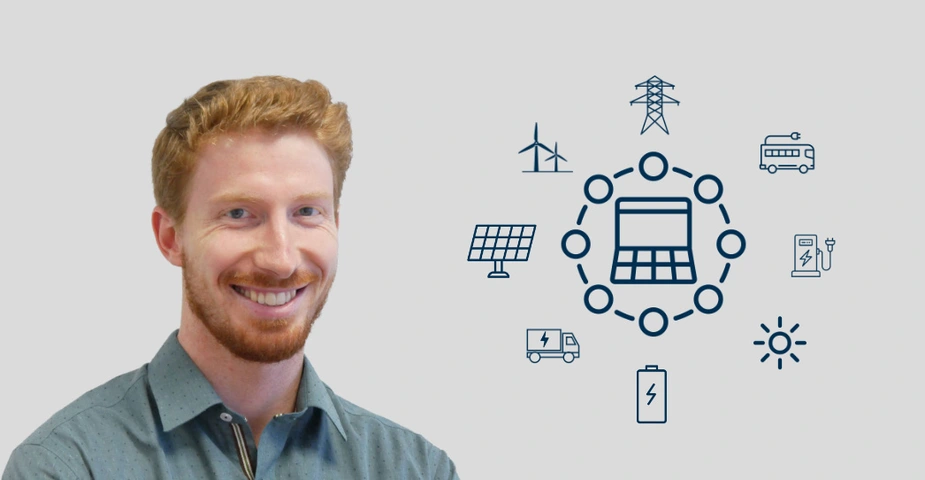Grid-friendly charging: How e-cars help with the energy transition
With the open source software SpiceEV, the Reiner Lemoine Institute has found a way for electric cars to support the power grid as rolling storage units
Electric vehicles not only draw electricity from the grid, they can also help make more electricity from renewable energies usable. They serve as rolling storage units and offer high potential for load-side flexibility through grid-serving charging. In order to make optimal use of this, the Reiner Lemoine Institut (RLI) has developed the open source software SpiceEV for simulating and analyzing charging strategies and has used it in the Netz_eLOG project together with IAV, E.DIS and DHL to demonstrate in concrete terms: logistics vehicle fleets offer secure flexibility and can relieve the load on electricity grids.
More than 8 TWh of electricity lost in 2022 due to deregulation
Figures from the German Federal Network Agency (BNetzA) for 2022 show that a record 8.071 TWh of electricity from renewable sources had to be curtailed due to grid bottlenecks. This energy could power nearly four million electric cars for a year. Because plant operators temporarily produce more electricity from renewable energies than can be fed into the grid, the plant has to be shut down or the feed-in throttled. Electricity that is actually generated cheaply cannot be used.
Grid-serving charging stabilizes power grids and reduces the need for grid expansion
If electric vehicles are charged in a way that serves the grid, they have high flexibility potential for the power grid. So far, this has hardly been exploited. Vehicles are fitted with batteries whose capacity usually exceeds their daily energy requirements many times over. At the same time, they are often left standing for longer than is necessary for charging. Optimal grid integration of vehicles can help stabilize power grids, reduce grid congestion and expansion costs, and make better use of electricity from renewable sources.
Commercial vehicles and logistics fleets offer very high potential for flexibility
Commercial vehicles in particular, such as those used in public transport or logistics, offer very high potential for supporting the power grid. Logistics fleets have uniform and consistent driving profiles. This is also shown by the results of the Netz_eLOG project with 30 StreetScooters at a Deutsche Post distribution center. The vehicles with similar arrival and departure times were able to offer the distribution network operator E.DIS assured flexibility and were charged according to specific charging plans from E.DIS.
SpiceEV – Software for charging strategies
Which charging strategy makes sense depends on various factors. For this purpose, the RLI has developed SpiceEV, an open-source program for the simulation and analysis of charging strategies – so that vehicle owners or electricity grid operators can simulate different charging strategies and analyze the effects on their own energy costs or the local electricity grid. The program is published on GitHub and can be adapted to your own requirements.
The ramp-up of electromobility and renewable energies
The ramp-up of electromobility and the expansion of renewable energies are in full swing. According to the coalition agreement, there should be 15 million electrified passenger cars on Germany’s roads by 2030. This will be joined by more commercial vehicles. In addition, the share of renewable energies in the electricity system is rising steadily and is expected to reach 80 percent by 2030. Under the right conditions, grid-serving charging can reduce costs for fleet and grid operators.
Increase incentive system through time-variable network charges
Every actor that routes electricity through the supply network pays a network fee to the network operator – similar to a postage stamp. The fees must be further developed as an incentive system. The BNetzA is taking an important step with the planned amendments to §14a EnWG. In particular, the introduction of time-variable network charges planned for 2025 represents a paradigm shift in Germany.
However, the planned static time-variable charges do not yet take into account the full electrification of the transport, heating and industry sectors. In order to achieve the goal of an energy system based on 100 percent renewable energies, dynamic elements in the grid charges are needed in the future so that grid restrictions are included even more strongly in the incentive system. To this end, the power grid must become more digital so that the charges can better reflect the actual situation in the grid.
Further information:
Contact:
Reiner Lemoine Institut
Research Unit: Mobility with Renewable Energy
reiner-lemoine-institut.de/en/research-fields/mobility-with-re-2/
Jakob Gemassmer
Researcher and project manager
Phone: +49 30 1208 434 85
Email: jakob.gemassmer(at)rl-institut.de
Timo Beyer
Communication
Phone: +49 30 1208 434 15
Email: presse(at)rl-institut.de
Credit: RLI / 24.10.2023
